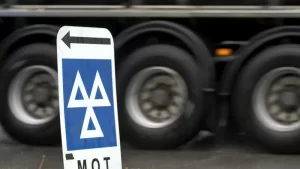2022 Ford F-150 Lightning XLT Road Test: Leaves no trace
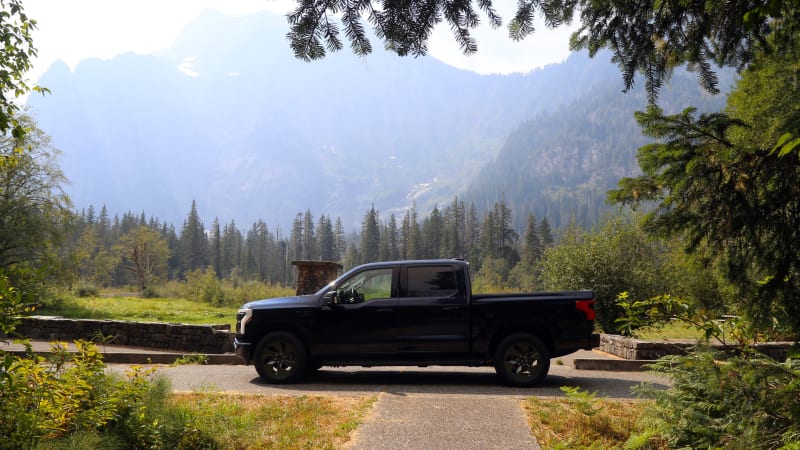
GRANITE FALLS, Wash. — The sign in the Verlot Ranger Station explained to visitors an important backcountry rule, and it answered the question of why Sasquatch remains so elusive: “Bigfoot’s been doing it for years: Leave no trace.”
The sign also made us realize we were enjoying this Saturday afternoon lap of the Mountain Loop Highway in the North Cascades in a leave-no-trace vehicle: a 2022 Ford F-150 Lightning XLT.
The absence of emissions from the truck would normally help us feel one with nature out here among the rocks and trees. But on this day, what we avoided spewing from a tailpipe was negligible compared to what else was happening around us. This being late summer/early fall in the Northwest, a wildfire had sprung up overnight along U.S. Highway 2 west of Stevens Pass. That’s about 20 miles south of where we were on the Mountain Loop.
The Bolt Creek fire was not close enough to be a direct threat, but the normal restorative dose of crisp mountain air and clear vistas on a backcountry outing wasn’t going to be possible. The peaks were shrouded in smoke, and at one point in the afternoon the sky glowed an ominous red. This eased as we headed north, away from the fire. As of this writing, the Bolt Creek fire has burned more than 13,000 acres, is far from contained, and a pall of smoke hangs over the Seattle area for weeks.
The F-150 Lightning got sprinkled with falling ash, which stood out against its dark Antimatter Blue paint. Which made me realize one weird advantage of EVs that maybe no one has considered before: If ever another volcano blows around here — Rainier, Baker, Glacier Peak, take your pick, we’ve got plenty — electric cars don’t have engine air filters and internals to foul. Back in 1980, Mount St. Helens ashfall trashed a lot of vehicles. EVs, the cars of the apocalypse!
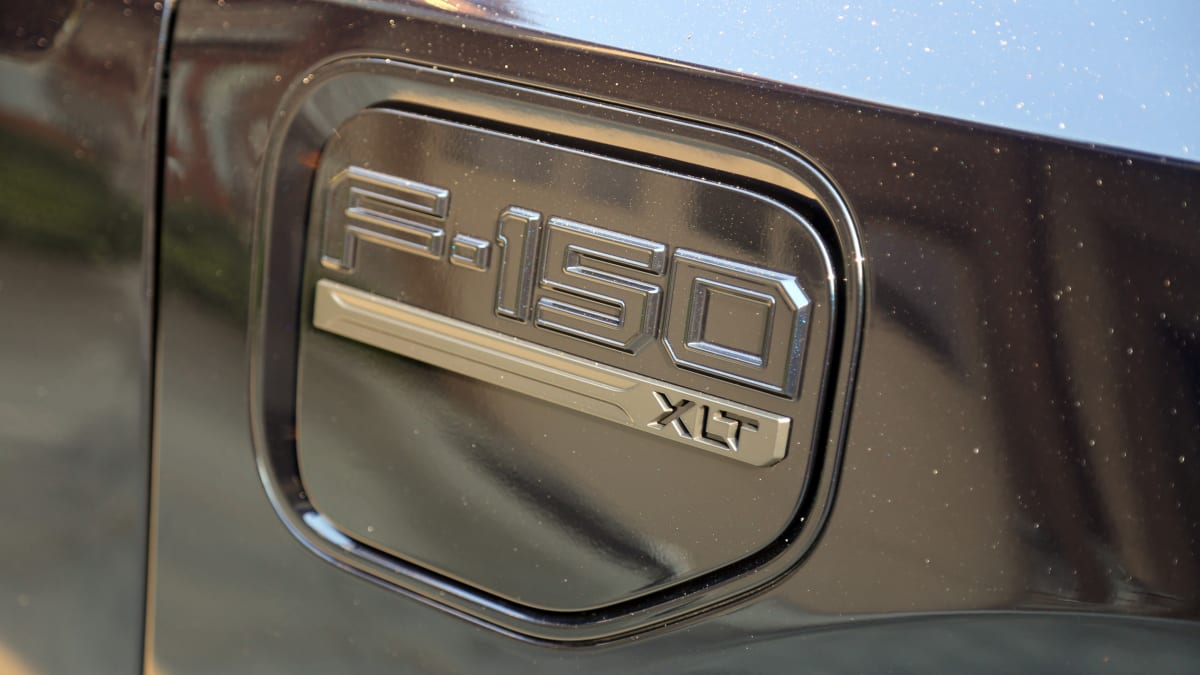
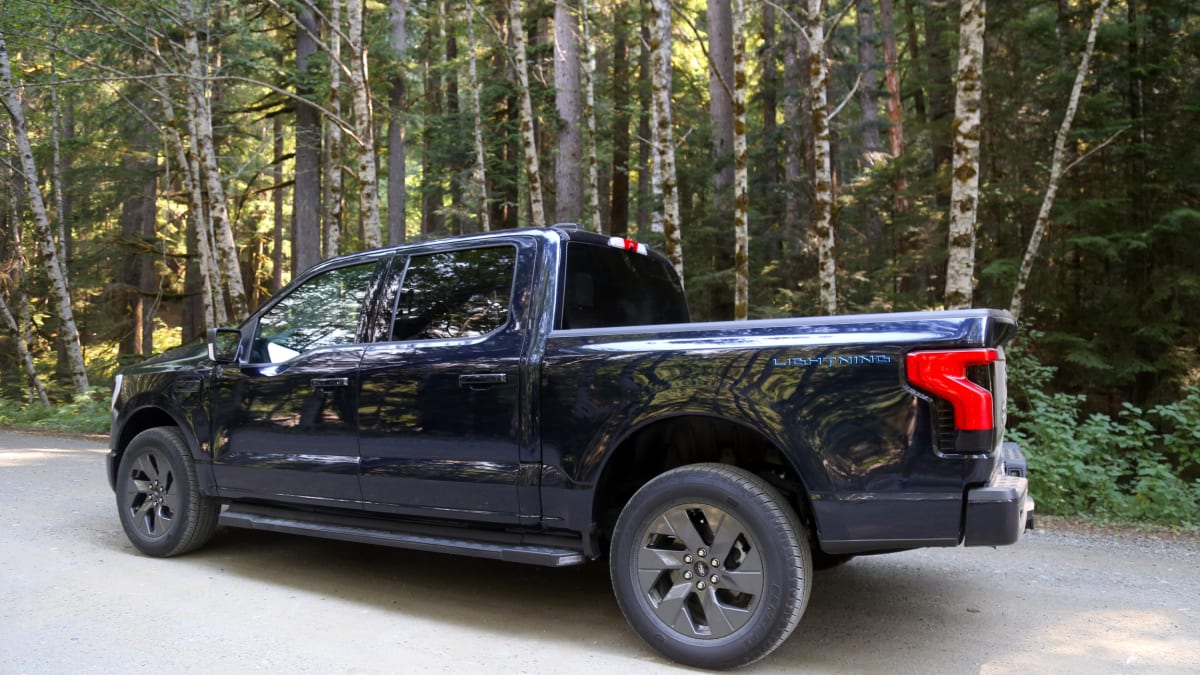
Authorities say the Bolt Creek fire appears to have been caused by humans, rather than by lightning — just as mankind has had a hand in creating the hot, dry climate conditions that feed the flames. It’s a reminder why the auto industry is transitioning to EVs in the first place. I’ve lived in the Northwest for nearly 40 years. Only in the past five or six years have Western Washington summer skies been choked with wildfire smoke. It’s now an annual event. The new normal-not-normal.
This Lightning was in XLT trim. We’ve written a lot about Ford’s EV truck, but this is the first XLT we’ve gotten our hands on for more than a few minutes. It’s a step above the basic Lightning Pro work truck, with the 2022 XLT starting at $54,769 including the $1,795 destination fee. That’s $7,500 more than the Pro, and it buys you additional standard equipment that includes the BoxLink cargo management system, 360-degree cameras, the distinctive Lightning front lighting, running boards, heated side mirrors, cabin fold-out work surface and more. The Pro, being a work truck, has vinyl seats, whereas the XLT has cloth. And the XLT has the potential to add quite a few more options — in particular, the extended-range battery.
This particular XLT had that 131-kWh battery, a $10,000 upgrade that offers an EPA-estimated 320 miles of range in XLT (300 miles in Lariat). Adding the big battery requires adding the 312A equipment group for another $9,500, which includes 20-inch dark carbonized wheels, 9.6-kW ProPower, more advanced Co-Pilot 360 driver assists, approach-detection cabin access, heated steering wheel and 10-way driver seat, and a power tailgate with step and work surface. Other options were the Tow Technology Package at $1,395 (which you’ll hear more about in our upcoming Tech of the Year testing), lockable underseat storage at $225 and spray-in bedliner at $595.
Grand total, $76,484.
That’s right, $76K, and cloth seats. Ford says the Lariat is the more popular trim, as a few grand more gets you leather. If you’re eating a cow, why choke on the tail?
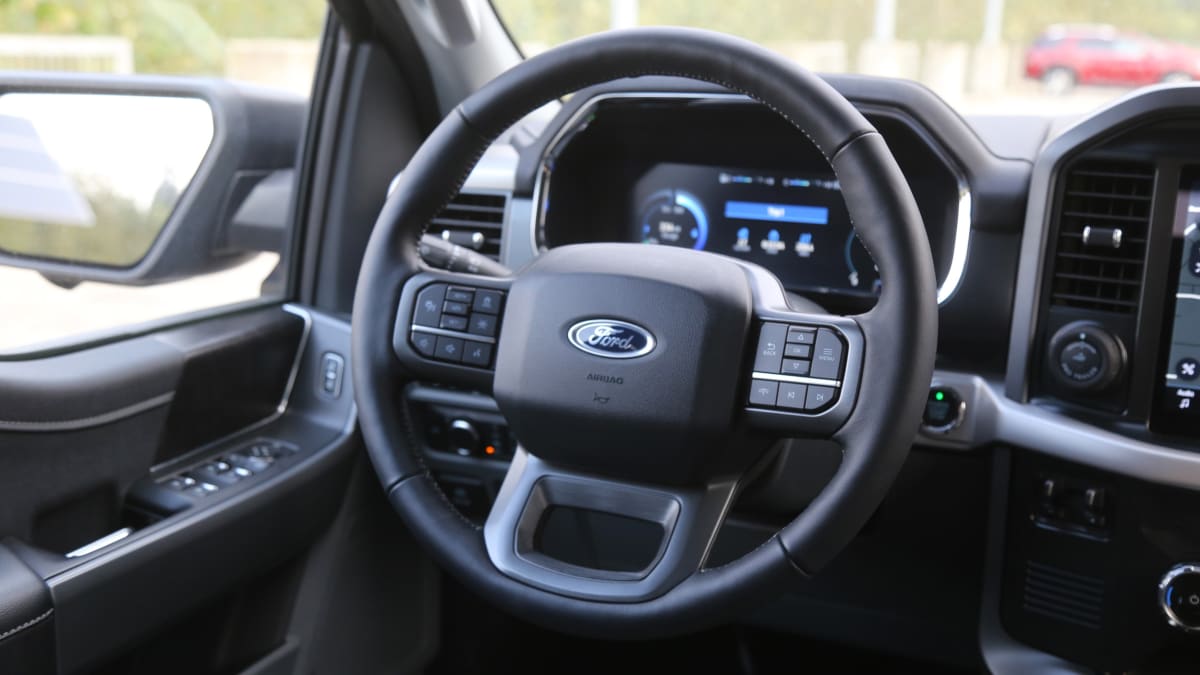


But wait, this just in: Ford last week announced massive price increases on 2023 Lightnings that will change the whole equation. Base price for a Pro will be over $54,000 with destination fee, MSRP for the XLT is a bit under $62,000, and if you were equipping this particular 2022 press truck as a 2023 model, it would cost $85,484 — that’s a $9,000 price increase over the truck we’re driving in this review.
One other item of note: For 2023, Ford’s configurator now lists the charging cord as a $500 prechecked “option.” It was simply standard equipment before.
The Lightning is eligible for the $7,500 federal EV tax credit, though the rules would appear to exclude the Platinum trim, whose $98,219 starting MSRP exceeds by a mile the new $80,000 price cap for trucks and SUVs. You’re an option or two away from a $100,000 truck.
With the discussion of price unpleasantness out of the way, let’s resume our drive. Now, the XLT has nice cloth seats, and the Lightning was enjoyable to drive and spend time in, seemingly no different than any other F-150 as long as you didn’t expect engine noise, don’t electronically raise the hood to discover the massive frunk, and weren’t looking forward to blowing a hundo on a tank of gas.
Even though the Lightning was a clean-air machine on a dirty-air day, there were other reasons to enjoy the trip. Despite the smoke smell and occasional flurry of ash, it was nice to drive the Mountain Loop Highway with the window down. (It’s not what you would call an actual highway; a long stretch of the Loop is unpaved.) With no sound other than an occasionally audible whine of motors and the crunch of tires on gravel, you could hear the Sauk River flowing alongside — and even birdsong. It was much like the experience of driving a convertible, where more of your senses are engaged with your surroundings in a way they normally aren’t.
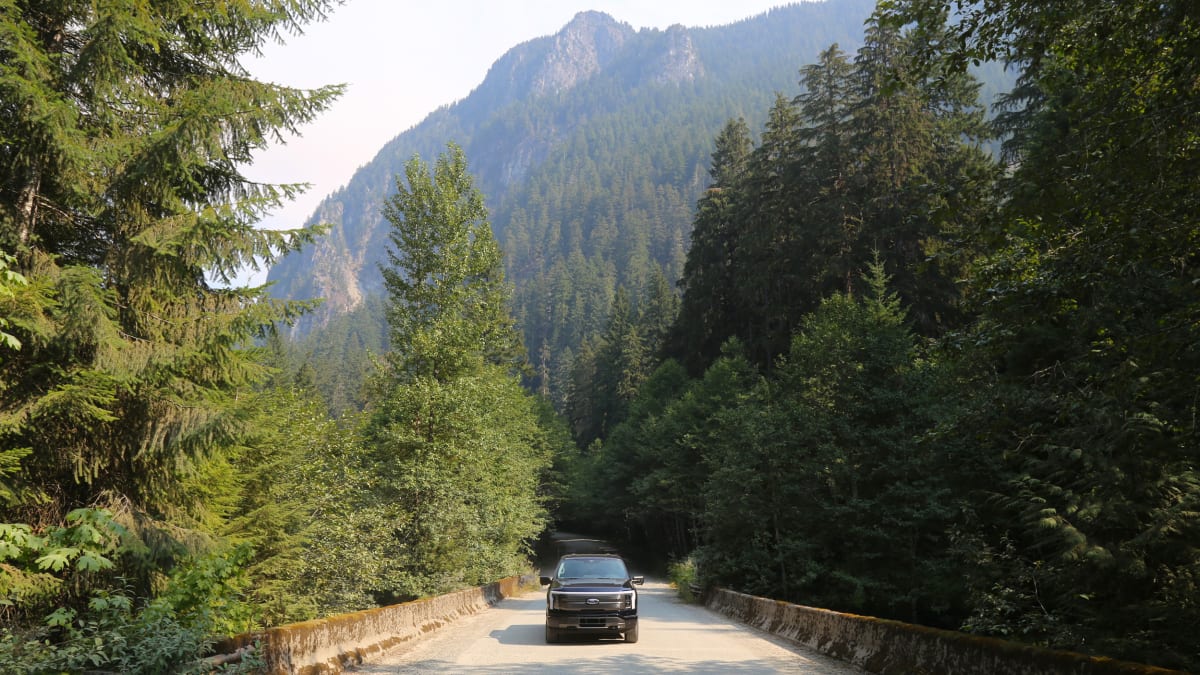
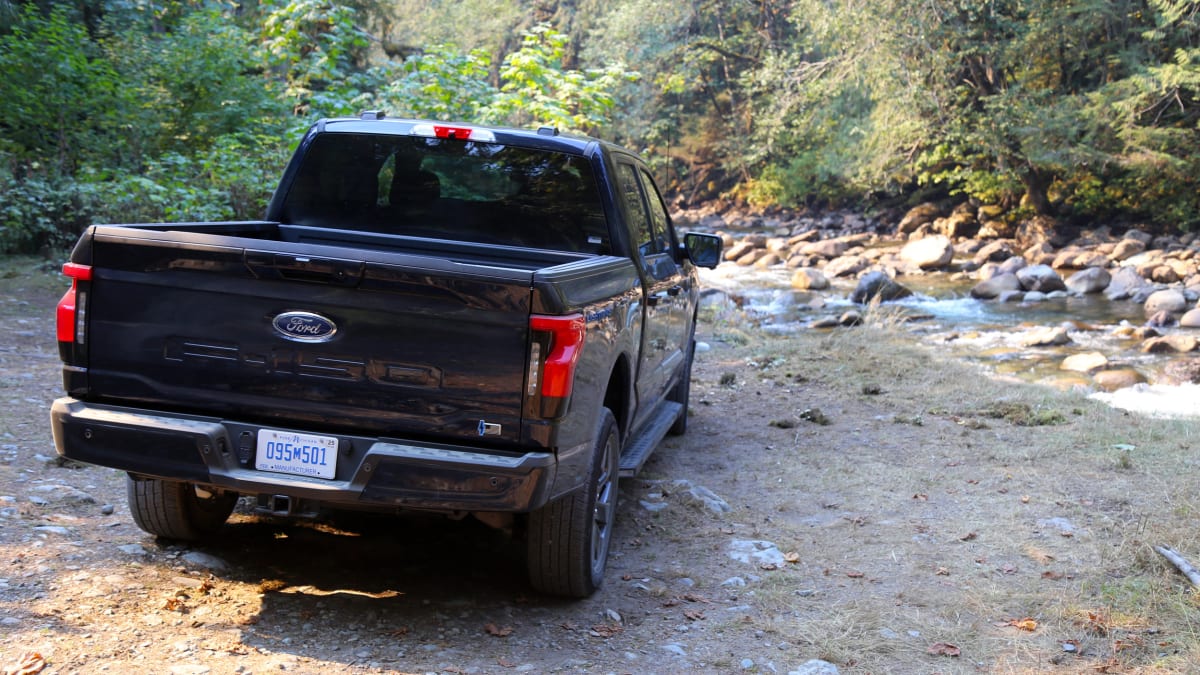
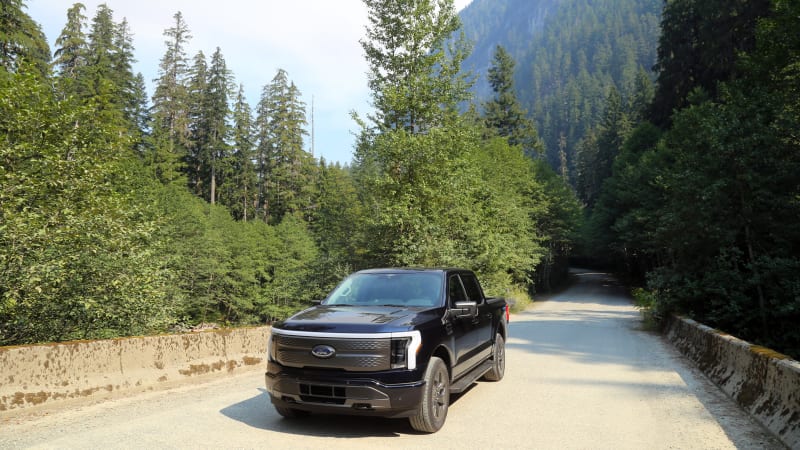
The GPS readouts of the nav screen told us that the road rose to 2,300 feet of elevation before pacing the river downhill toward the logging and bluegrass town of Darrington. The Lightning’s dashboard EV gauge does not tell you a specific battery percentage along the way; presumably Ford does this on purpose, because with a 320-mile official range estimate, a driver shouldn’t have to sweat every percentage point like we used to with other EVs. Hoisting the Lightning’s 6,000 pounds up and down the hill expended an average of 2.5 miles/kWh over a trip of 205 miles. Arriving home and checking the truck’s startup animation, which is when the computer does briefly reveal a precise battery percentage, showed 40% charge remaining, with an estimated additional 125 miles of range to go. Together, that’d be a total of 330 miles on a single charge, beating the EPA estimate. Without elevation gain and with the benefits of more regen during around-town driving, it’d surely do even better.
With no 240-volt charger at home, it took the XLT nearly three days to sip its way back to full charge from a 120-volt outlet — that’s the downside of having such a big battery. Obviously if you owned this truck you’d want to get an electrician in for an update to your garage.
Once the Lightning was topped off, I pulled it back out of the barn to take some pictures. It still had flakes of ash on it, and was generally dirty from the roadtrip. But a dirty truck is a happy truck. And a truck with clean emissions can be a happy thing too.
Related videos:
